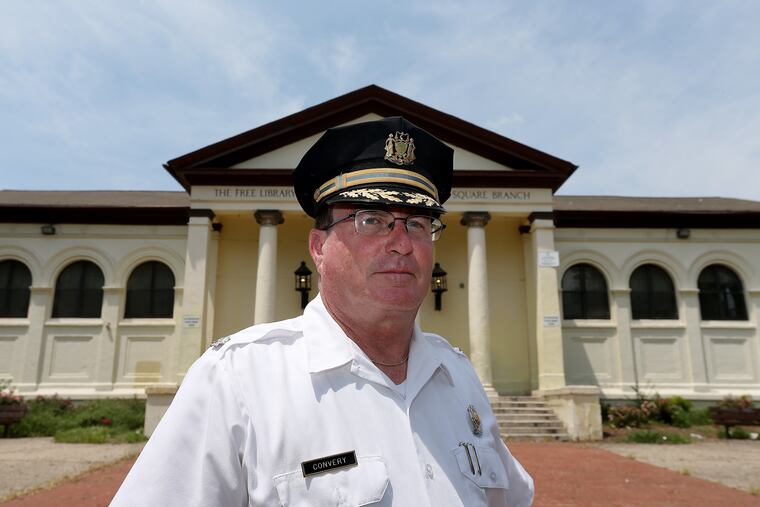How do Philadelphia police respond when overdoses spike?
Just like the city outreach workers who mobilize when overdoses rise, police officers in Kensington follow a special protocol when a "bad batch" of heroin spreads through the neighborhood.

On Friday night, Philadelphia Police Inspector Ray Convery of East Division — which includes some of the hardest-hit neighborhoods in the nation's worst big-city opioid crisis — noticed overdose numbers were rising in Kensington.
Convery gets an hourly report on overdoses; every officer in East Division is trained to administer Narcan. And, just like the city outreach workers who mobilize when overdoses rise, his division now follows a special protocol when a "bad batch" of heroin spreads through Kensington, as it did throughout the weekend.
Seven people died in the weekend's spike, and 110 were revived by police and paramedics. That came just two months after 165 people overdosed and 10 died when a batch of heroin cut with a synthetic cannabinoid was sold in Kensington over a July weekend.
The Police Department's goal is not only to revive people but also to stop the spread of tainted bags, which often are stamped with a specific name, Convery said. City officials long have acknowledged that it's not possible or productive to conduct mass arrests of street-level dealers and their customers.
"The first thing we do is get a patrol car out there to stop them selling," he said. "We initially send in extra police to the corners, and once we find out where it's being sold we concentrate on those particular corners."
Police officers respond to overdose cases with paramedics to look for tainted bags and ask victims where they bought them, Convery said.
Over this last weekend, he said, it soon became apparent that bags with the same stamp were driving the overdose spike.
"We were successful for a short period of time on Friday night in shutting down the overdoses," he said, "but unfortunately the opiate market adapted to what the police did and started selling from different locations." So Convery moved his patrol cars to the new corners.
By Monday, the situation around the city was back to normal — meaning police and medics were responding to between 10 and 20 overdoses a day.
Still, he said, police are combating a resilient drug market where overdoses actually can increase demand for certain stamps. Some people in addiction will avoid a particular stamp after hearing it's behind a rash of overdoses. Others will seek it out, figuring that their tolerance is high enough that they'll experience a better high without succumbing to overdose.
"It's the law of supply and demand, and there is a huge demand here in this section of the city — the supply will come no matter what we do," Convery said. "Citywide narcotics have taken down very big operations recently, and it has yet to dent the market. It's an ongoing battle, but I have yet to put the white flag up."
The weekend's overdoses — which are suspected to have been driven by a batch of heroin tainted with K2, a synthetic cannabinoid, like July's overdose spike — were particularly frightening because of the combination of drugs involved, Convery said.
"K2 is the wild card," he said. The drug combination causes severe agitation in some of its victims: "A couple rescue units have gotten injured. That's part of the reason we respond with them, to help them out out there."